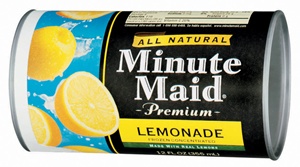I recently read an article detailing how family dinners are back in vogue. Although study after study shows the benefits of family dinners, for most families on the go, it was difficult to attain. However, more and more, families are starting to once again realize the benefits of sitting down to share a meal together. And by sitting down, I mean gathering around a table, not all sitting in their respective seats in a car or on bleachers.
I think this is a great thing. To me, the reason behind why a family sits down to dinner together several nights a week is irrelevant. The article I read said that more families are eating together as a byproduct of the Recession—unemployment, smaller restaurant budgets, less kids’ activities are all cited as reasons. The intended point is that less money equals more meals at home (not to mention the health benefits, and long term effects on the kids such as better nutrition, better school performance, lower rates of drug use, etc).
But why not use these meals as a learning experience? After all, for most of us, our financial education begins at home. This comes into play particularly if a family is experiencing a reduction in income. Family meals are the perfect time to discuss what’s going on, answer questions the kids might have, as well as provide a lesson in home economics. For instance, during these meals, families can discuss:
- The cost of eating at home versus in a restaurant. Let’s say your family is eating hamburgers and French fries, with the whole meal prepared at home with ingredients purchased at the supermarket. Ask the kids how much they think the meal cost to prepare and then ask them how much they think it would have cost at a mid-priced restaurant. Compare the prices. Talk about why it costs less to make the meal at home. Explain why your budget needs the savings. Or, if you’re not on a strict budget but want to reduce your dining out budget, discuss with the kids what the family as a whole can do with the saved money (day at an amusement park or the zoo or a new game or toy, for example).
- Having a grocery budget. And how to maximize it. Talk to the kids about why it’s necessary to review what’s in the pantry and freezer before you go to the store. Share why you do (or don’t) use coupons and shop sales. Discuss stockpiling. Explain why you need to have a strict budget and why you can’t just grab whatever you see on the shelves anymore. You can even ask the kids for their input on what items they think they can do without and which ones they can’t. Including them in the process makes it less difficult. Kids can process more than we think they can, and sometimes in our efforts to protect and insulate them we leave them confused. Talking to them about the budget makes them feel included in the process which in turn makes it easier for them to handle the adjustment.
- Menu planning. Explain to your kids why you need to plan your meals carefully. Discuss how menu planning impacts the overall grocery budget, and how by menu planning meals and snacks, there might be some extra room in the budget for treats like a half gallon of ice cream or an additional bag of chips. Ask them for their input on what foods they’d like to eat. You can even use this an opportunity to come up with a way for creative menu planning. For instance, each family member is assigned a day of the week to pick that day’s meals. Talk about weekly meal themes (ex., the first week of the month is new foods week or the last week is Mexican food week). Try to make menu planning fun and interesting for your kids. This way, they won’t really notice the change in habits.
These suggestions should be adjusted based on the age of the kids in your home. Older kids might be more resistant and younger kids might not even notice. But that doesn’t mean you should stop trying to include them in the process.
And if the biggest impact you’ve made is creating some family memories, well, that’s okay, too.

